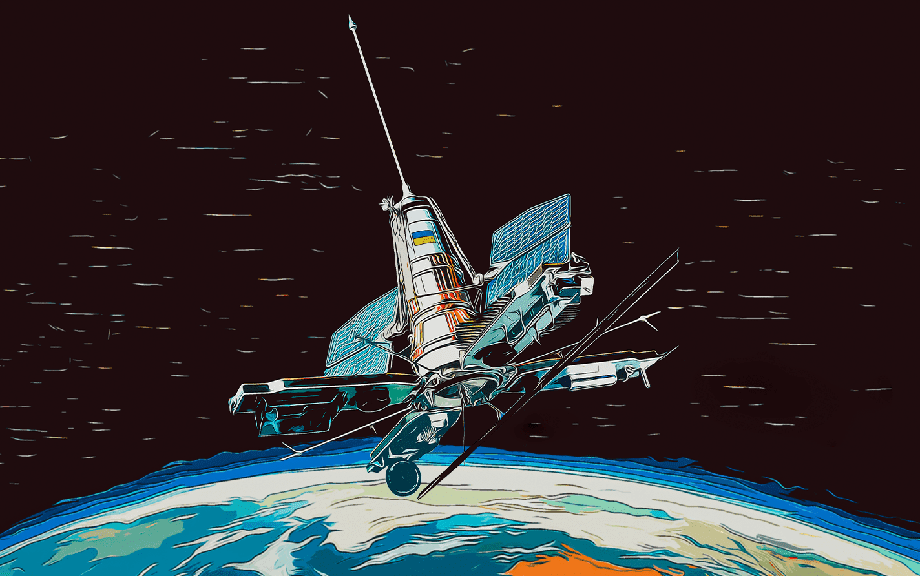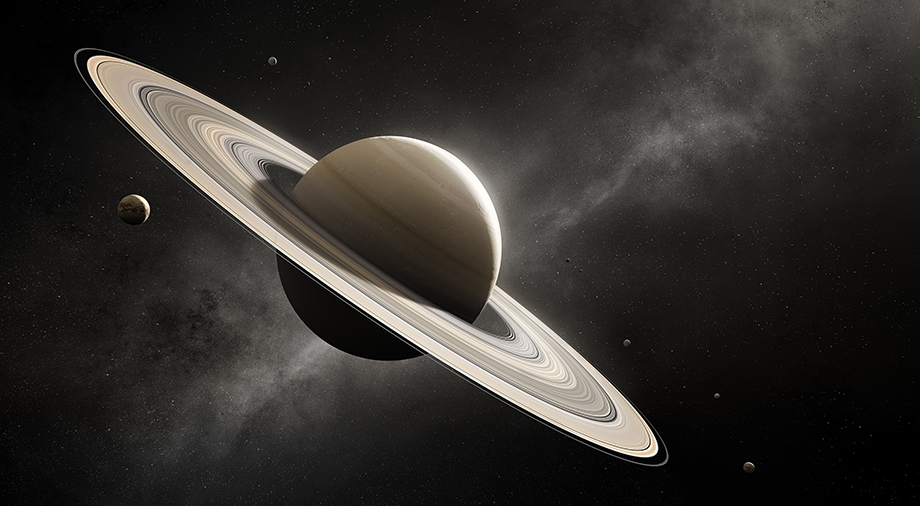The space industry located on the territory of the Ukrainian SSR played a significant role in the development and construction of satellites. The Kharkiv Kommunar and Monolit plants, Kyivs Arsenal factory, and the Evpatoria Space Center contributed their efforts to launch the first satellite into orbit in 1957. Moreover, it was in the workshops of OKB-586 (today – the Pivdenne Design Bureau) that the production line of Dnieper satellites (DS) was founded, also known as Cosmos and Intercosmos (their export modifications).
Since its declaration of independence, Ukraine has maintained its course towards designing and developing its own satellites, but has encountered a series of obstacles along the way. They are mainly associated with a lack of orders and an outdated industrial and technical base, which has not undergone significant changes since Soviet times.
However, the latest approaches now being demonstrated by the private aerospace sector are markedly improving the situation, and Ukrainian-developed satellites – both those built by state and private firms – are successfully reaching orbit again.
The first monitoring satellites: the legendary Sich series
After the collapse of the USSR, Ukraine emerged as one of the most agriculturally developed countries of all the post-Soviet republics. This led to the idea of using satellite technology to monitor the condition of farmlands from orbit. The idea was simple: to launch an optical satellite (essentially a large telescope aimed at our planet) into orbit with a sufficiently powerful camera to collect current data on the state of vegetation, soil, inland water bodies, as well as to monitor other physical and geological structures .
This is the origin of the concept of the Sich satellite, produced by the A.M. Makarov Pivdenne Machine Building Plant. The first bird to fly from this nest was the Sich-1, weighing 1915 kg, which reached orbit on August 31, 1995 on board the three-stage Cyclone-3 launch vehicle.
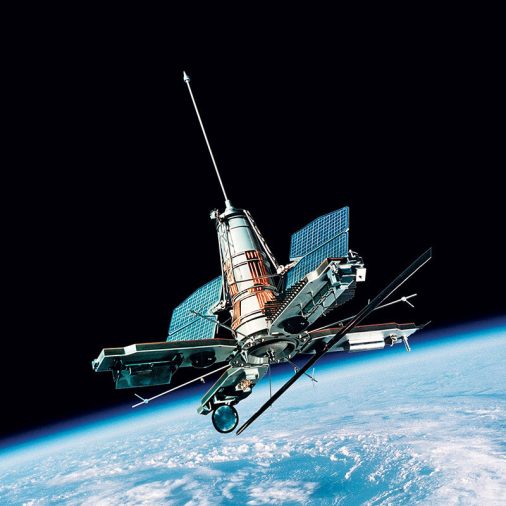
In addition to monitoring, the Sich-1 also had a research mission. The satellite studied the Earth’s ionosphere and magnetosphere and could analyze the level of space plasma. The device exceeded its planned five-year operational life and ran until 2001, providing Ukraine with up-to-date information, primarily about the state of its own territories.
The next satellite in the series was the Sich-1M, launched into orbit on December 24, 2004 on a Cyclone-3 rocket from the Russian Plesetsk cosmodrome. In many ways, the spacecraft was similar to its predecessor. Of course, there were significant differences, like the higher resolution on the Sich-1M optical camera which amounted to 24 m per pixel. The bandwidth of the satellite side scanner also increased significantly from 450 km to 700 km.
The satellite carried a much larger payload of scientific devices, which allowed it to collect data not only in the optical, but also in the infrared and microwave ranges. Naturally, this upped its weight from the Sich-1 version, increasing it by 308 kg to reach 2223 kg.
But the Sich-1M’s weight gain was not at all in vain. In particular, the satellite was loaded with the:
- MSU-EU complex with optical camera for video surveillance.
- XRF complex of radiophysical equipment for obtaining data in the microwave range.
- MTVZA-OK hybrid scanner capable of receiving data in the optical, microwave, and infrared bands all at once. The device has proven itself in studying the climate and atmosphere, as well as in studying the upper layers of water surfaces.
- RTK-M optical complex intended for meteorological purposes and climate change research.
As before, the satellite’s main function was monitoring. The Sich-1M was focused on studying the waters of the world’s oceans, glaciers, vegetation, and climate. IT was also tasked with conducting the so-called Variant experiment to study the occurrence of seismic activity on Earth. During its operation, which lasted from December 24, 2004 to April 15, 2006, the device performed complex experiments together with National Oceanic and Atmospheric Administration (NOAA) satellites, as well as with the French meteorological monitoring satellite Demeter.
The second generation of Sich satellites appeared five years after the conclusion of Sich-1M’s operation. On August 17, 2011, the third satellite in the series, Sich-2, launched into space on a Dnipro rocket. The most significant difference of the new satellite was the Potential complex of scientific equipment, which carried out thorough studies of space plasma and the electric and magnetic fields of the upper atmosphere. Unfortunately, Sich-2’s time in orbit was short-lived. Due to an anomaly in the spacecraft’s power supply system, communication with it was lost on December 12, 2012.
The latest installment in the Sich series came recently, and was dedicated to the 30th anniversary of Ukraine’s independence. Thus, it was given the name Hence the name of the new satellite – the Sich-2-30.
Structurally, the fourth Sich version was very similar to the Egyptian satellite EgyptSat-1, the tender for which the Yuzhnoye Design Bureau won back in 2001. Development of the Sich-2-30 started in 2015 and lasted four years. The total cost of the project was $245 million.
Like its predecessors, Sich-2-30 was equipped with an optical camera,allowing it to take pictures of the earth’s surface at a resolution of 7.8 m per pixel. It should be noted that in 2021, this level of resolution was too low to be useful for military reconnaissance purposes, but it was still well suited for other tasks of monitoring the Earth’s surface. To fill this gap, the State Space Agency of Ukraine (SSAU) decided to use Sich-2-30 for initial monitoring, photographing areas of interest and, if necessary, purchasing higher resolution images (up to 0.5 m per pixel) from other operators on the international market. This rather controversial decision still did not allow the satellite to unlock its potential for performing national security and intelligence missions. Unfortunately, Sich-2-30 remained an intermediate link, which rather slowed down the reconnaissance work rather than speeding it up.
However, the low resolution of the Sich-2-30 optical cameras was not the satellite’s main problem. After the spacecraft’s launch on January 13, 2022, the SSAU was unable to establish stable communication with it. Because of this, Sich-2-30 was unable to receive commands from its operators for spatial orientation and orbital navigation. This failure led to disruptions in the satellite’s power supply system, as its solar panels were pointed towards the Earth and received only sunlight reflected from the planet’s surface. Occasionally, direct radiation from the Sun hit the satellite’s solar panels, but the angle of incidence was too acute to maintain stable operation.
Sich-2-30 to this day remains in a limited operating mode, so it is difficult to classify it as a Ukrainian space asset. However, in some aspects, the satellite achieved firsts. Sich-2-30 marked the first example of cooperation between SSAU and SpaceX. For $2 million (which was the best offer possible on the market), the spacecraft was launched into orbit on a Falcon 9 rocket. Sich-2-30 was also integrated into the network of European monitoring satellites of the Copernicus program, which gave it the opportunity to exchange data with European observation satellites.
The history of the Sich monitoring satellites has gone through times of ups and downs. They represent Ukraine’s first successful satellite program for the purposes of remote Earth sensing and confirmed Ukraine’s ability to develop in this domain. This first successful experience with monitoring satellites convinced the Ukrainian space sector of its own ability to develop spacecraft for other purposes, and the explosive development of telecommunications satellite technologies at the beginning of the new millennium formed the vision for Ukraine’s next space project.
Telecommunications satellites: the stolen Lybid
The project of the first Ukrainian telecommunications satellite, which the State Space Agency of Ukraine planned to launch into geostationary orbit of the Earth, was truly robbed. According to the developers’ plan, the satellite, named Lybid, was to be equipped with 24 transponders (20 active and four passive) with a power of 100 to 110 W, which would allow radio broadcasting in Kin-frequency range.
Lybid was intended to become the foundation of the creation of the National Satellite Broadcasting System of Ukraine: to provide services of its own regional radio and television broadcasting, telephony, and satellite Internet. In addition to the focus on Ukraine’s domestic market, the hardware potential made it possible to provide foreign satellite broadcasting. In particular, it was planned to be used for television broadcasting and providing fast Internet access to the regions of the Middle East, Asia, and Eastern Europe. Ukraine came very close to establishing its own telecommunications network and becoming the leading provider of satellite telecommunications services in regions where there was indeed great demand for them.
The Canadian company MacDonald Dettwiler and Associates (MDA) was chosen as the main contractor for the construction of the spacecraft. The company developed telecommunications equipment and other communications equipment that was to be installed on Lybid. The Russians also got their place in the project – the Reshetnev Information Satellite Systems (ISS) enterprise from Zheleznogorsk, which developed about 65% of all modern Russian satellites, was chosen as a co-contractor in the project. ISS had to design the structure of the payload module, as well as the satellite bus – the platform on which it was to be installed.
As one can see, the Lybid satellite could be called Ukrainian rather arbitrarily. The only purely Ukrainian launch vehicle in the project was the Zenit-3SLB (later replaced by the Zenit-3SLVF), which was supposed to deliver Lybid into orbit. It was the Canadian-Russian development that later played a cruel joke on this satellite.
The cost of the Lybid project (satellite and ground infrastructure for receiving the signal) was initially estimated at more than $254.6 million. This was a lot of money for the SSAU, so to carry out the project, Ukraine took out a ten-year loan for $290 million from the Export Agency of Canada (EDC). Systematic postponements of the satellite launch predictably led to an increase in this amount, bringing it to $300 million as of the beginning of 2020.
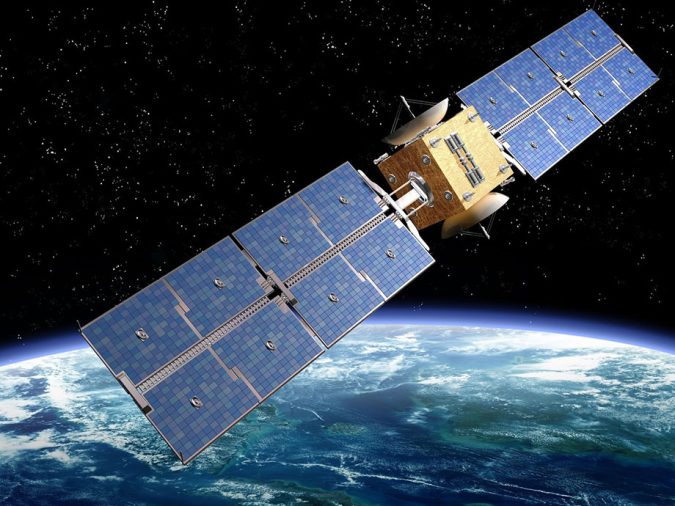
But money was not the only problem with the project. The French telecommunications company Eutelsat issued a note of protest against the working orbital position of the satellite, which was planned to be located at 38.2° east longitude. Eutelsat expressed concern that keeping the spacecraft in this orbital plane would cause Lybid to conflict with French telecommunications satellites that were already in an orbital position at 36° East longitude. The company asked the Ukrainians to change the operating position of the satellite, in return for providing the SSAU with access to one of its relay satellites.
At first, Lybid was planned for launch into orbit in 2011 from Kazakhstan’s Baikonur cosmodrome. A Ukrainian-made launch vehicle, a Zenit-3SLB rocket, was planned to be used for the launch. The rocket was a modification of the Ukrainian Zenit-3SL, which at that time was launched from the floating launch platform Sea Launch. But time passed, and the Zenit modification never appeared.
In 2014, the still unfinished satellite was relocated to the Russian city of Zheleznogorsk, where the project’s co-contractor, ISS, was to carry out its part of the work. However, the deadline for completing this work was constantly delayed (considering that in 2014, Russia began its hybrid aggression against Ukraine, one can conclude that the Russian side created these delays deliberately).
The first step that led to the demise of the Lybid project was taken by the Canadian MDA. On September 7, the main contractor unilaterally withdrew from the project without explaining its reasons to the general public. The SSAU made a number of attempts to return the Canadians to development, but none of them were successful.
At the time of Russia’s aggression, the prototype of the satellite was located at the Russian enterprise ISS. The Russians successfully took advantage of the delays and the withdrawal of the main supplier of telecommunications equipment from the project, and the satellite remains in Zheleznogorsk to this day, essentially stolen by the Russian enterprise.
A series of misunderstandings and the lackluster interest in the development of the project by its main participants gave the Russians a chance to use their favorite tactic: “Take from your neighbor that which he cannot protect.”
The legal battle for the return of the Lybid satellite to Ukraine is still ongoing between the two countries. The SSAU demands that an international arbitration court return the spacecraft to Ukraine or recover from Russia the full amount spent by our country on its development. Theoretically, hopes for the restoration of justice in the story of the kidnapping of Lybid still exist, but the aggressor country has blatantly disregarded the norms of international law more than once, so it is useless to hope that the experience of Lybid will differ significantly from established practice.
Formally, while the lawsuit remains underway, the Lybid satellite project is still in development status. To replace the stolen satellite, Ukraine decided to develop a new one. According to the plan, Lybid-M will be a purely Ukrainian development, and its production will be carried out by the Pivdenne Design Bureau and the Pivdenny Machine-Building Plant. However, information on the status of the development of the new satellite has not yet been made public.
PolyITAN cubesats: when size matters
Since 2014, Ukraine has produced a number of interesting developments in the form of three miniature PolyITAN satellites, which have been launched into orbit. PolyITAN was the first Ukrainian nanosatellite in the CubeSat format. The size of the spacecraft is no more than 10 cubic centimeters, and weighs no more than 1.3 kg. CubeSats have set a new trend in satellite technology and have proven themselves as mission satellites and experimental laboratories for space exploration.
CubeSats have gained the greatest popularity in the last decade, largely due to increased interest in low-Earth orbit (LEO). The operating altitude of PolyITAN-1 ranged from 650 to 710 km. Miniature satellites are cheaper and easier to construct in comparison to the multi-ton giants that dominated the satellite industry throughout the second half of the 20th century).
Ukraine picked up on the trend of miniaturized satellites quite early. Development of the first PolyITAN-1 model began at Kyiv’s Igor Sikorsky Polytechnic Institute in 2009. PolyITAN-1 became part of the international QB50 program for the study of climate change among universities, and junior researchers, students and engineers of the KPI participated in the development of the spacecraft.
The main purpose of PolyITAN-1 was to study how the environment of space affects satellite systems and electronics. It was also supposed to demonstrate the ability of Ukrainian specialists to perform work in the rocket and space industry and help develop qualified personnel in this field. It was launched on June 19, 2014 on board a Ukrainian Dnipro launch vehicle along with 32 other satellites from 17 countries that took part in the QB50 program.
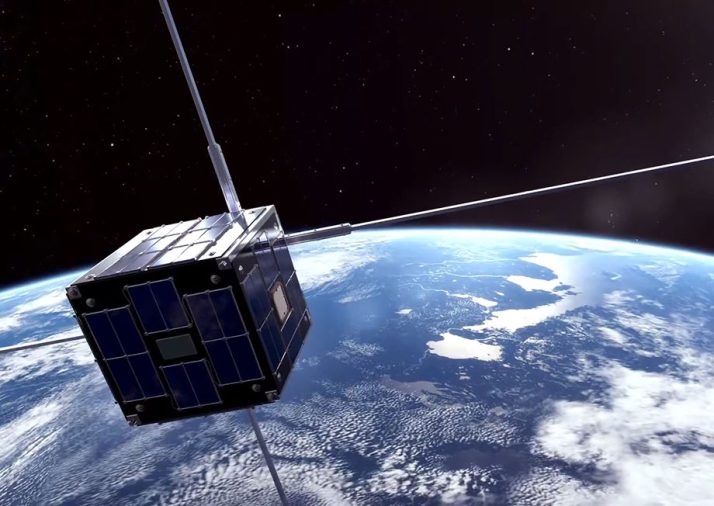
The success of PolyITAN-1 inspired specialists from the Kyiv KPI to continue working in the field of building new models of cubesats. The new satellite, called PolyITAN-2-SAU, like its predecessor, was part of the next phase of the university’s QB50 program. This time, the main goal of PolyITAN-2-SAU was to study the Earth’s thermosphere. Using cubesat sensors installed onboard, it measured the concentration of atomic oxygen in the upper layers of the earth’s atmosphere. The nanosatellite increased slightly in size (10x10x20 cm) and weight (1.9 kg). Four solar panels consisting of 16 gallium arsenide photovoltaic converters were responsible for powering PolyITAN-2’s key systems.
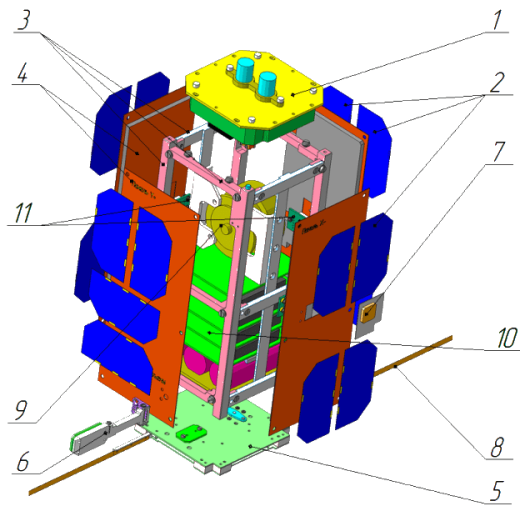
1 — payload (FIPEX); 2 – solar panels; 3 – load-bearing structural elements; 4 – honeycomb panels; 5 — antenna module; 6 — magnetometer with deployment mechanism; 7 — GPS/GLONASS antenna; 8 – radio antenna; 9 – flywheel; 10 – electronic platform; 11 — solar coordinate sensor
On April 18, 2017, the Ukrainian cubesat was delivered to the ISS on board an Atlas 5 rocket, from where it was subsequently launched into operational orbit along with 26 other QB50 nanosatellites.
The third and so far final satellite in the series was PolyITAN-HP-30. The spacecraft continued its journey to improve the technologies that were introduced in the two previous cubesats. PolyITAN-HP-30 was launched into orbit on January 3, 2023 during SpaceX’s commercial Transporter-6 payload mission into orbit. Looking ahead, we can say that the cubesat will not be the only Ukrainian satellite to be in the Falcon 9’s payload bays.
As of now, all three Ukrainian cubesats of the PolyITAN series continue to operate in orbit. In 2021, PolyITAN-1 became the most stable Ukrainian cubesat among the other 33 launched into orbit with it. Designed to operate for just one year, PolyITAN-1 has now exceeded its operational life nine times, and it remains the only active satellite in orbit among its QB50 peers launched at the same time.
Future plans: seven satellites in orbit by 2025
Ukraine is trying to speed up its development and deployment of domestic satellites. The plans of the new SSAU space program for 2021-2025 include the launch of seven Ukrainian satellites into orbit (including the already-launched Sich-2-30).
According to SSAU Chairman Volodymyr Taftay, all seven planned satellites will be used for remote Earth sensing. The monitoring satellites were set to make a very valuable contribution to Ukraine’s national security and defense, but the full-scale Russian invasion prevented these plans from coming to fruition.
Under time constraints, Ukraine was forced to resort to the services of already active satellites in order to get its own “eyes” in orbit. The best candidate for this role was the Finnish synthetic aperture monitoring (SAR) satellite ICEYE, which was rented for a year (with the subsequent possibility of extension).
In all likelihood, the war is unlikely to allow the SSAU to implement its plans to launch six more satellites into orbit before the end of 2025. With the critical budgetary situation caused by the war, the SSAU satellite initiative has been put on pause for now. In the difficult conditions of development of the national space industry, real hope for restoring the image of Ukraine as a space power now lies with the private aerospace sector, which continues to carry out breakthrough projects.
Private offers on the satellite monitoring market
Along with the state initiative to place a constellation of seven Ukrainian monitoring satellites in orbit by 2025, a private company with Ukrainian roots has put forward similar plans. EOS Data Analytics is part of the large-scale vertically integrated Noosphere group, created by Ukrainian businessman Max Polyakov. Today, Noosphere companies are involved in many domains of space technology, the largest of which remains the satellite industry.
The Dnipro-based company SETS (Space Electric Thruster Systems) is developing compact satellite Hall thrusters that use electric specific impulse to propel spacecraft. The SPS-25 electric motor also powers the EOS SAT-1, EOSDA’s first precision agriculture monitoring satellite.
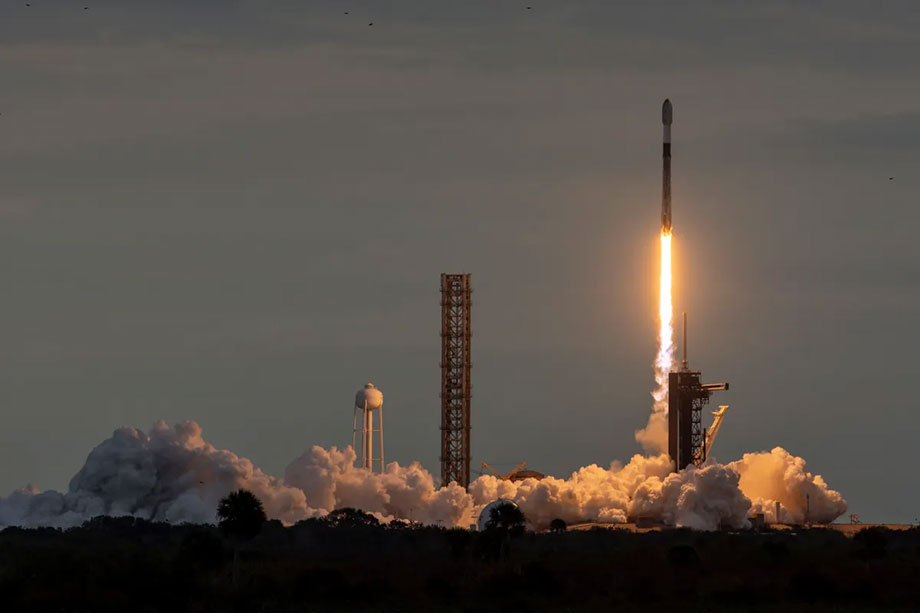
Undoubtedly, monitoring satellites were previously capable of conducting spectral monitoring of the earth’s surface, but it was EOSDA that was the first to bet on the introduction of commercial services related to this activity. The company offers its clients satellite imaging of crop areas from orbit in 11 different scanning ranges (with the next satellite constellation set to up this figure to 13), and provides further analysis of collected data using artificial intelligence technologies.
The company plans to put a constellation of seven monitoring satellites into orbit which, upon customer request, will be capable of monitoring 99% of the crop areas of the 20 most developed agricultural countries in the world. The total area of daily coverage of land plots after the deployment of all constellation satellites will be more than 12 million km2.
The success of EOS SAT-1 proved that Ukrainian satellite enterprises can supply the market with high-quality spacecraft and perform the entire range of necessary maintenance work. EOS Data Analytics is the first Ukrainian company in the field of satellite monitoring that has managed to do this.
Since the country’s independence, Ukraine’s satellite manufacturing industry has undergone a number of painful trials, but has managed to endure and recover from them despite everything. Attracting foreign contractors, however, has proven a serious challenge, as the frequent delays that plague the Ukrainian space industry have too often scared away potential partners from abroad. Despite their great potential, Ukrainian satellites have not become dominant in the market. The past decade has shown that private capital is able to change this disastrous trend, and advanced enterprises in the space industry can operate effectively in the country (and beyond its borders). Now a new generation of specialists is being developed on this basis, and the arrival of third-party investments gives the Ukrainian satellite industry reason to hope that one day, it will become truly competitive in the world market.

